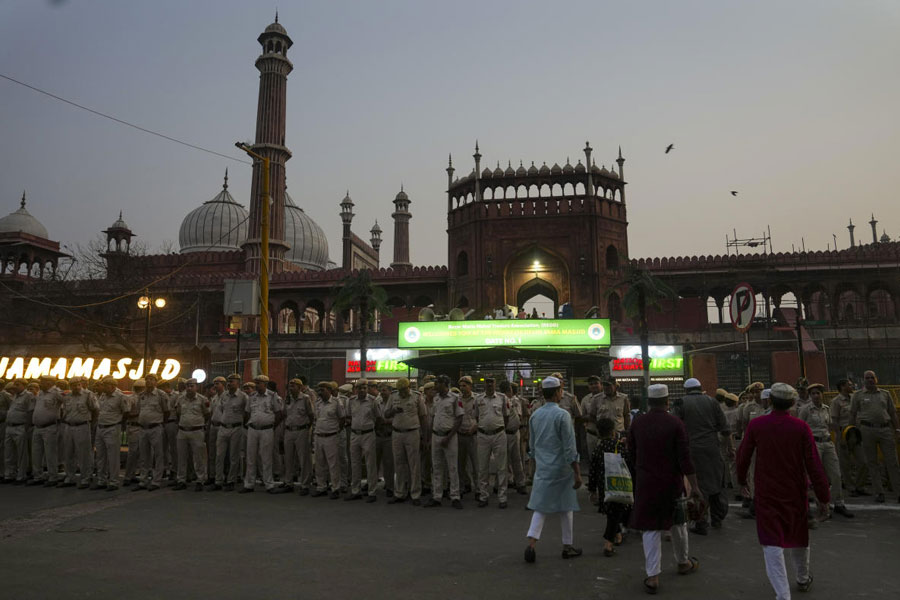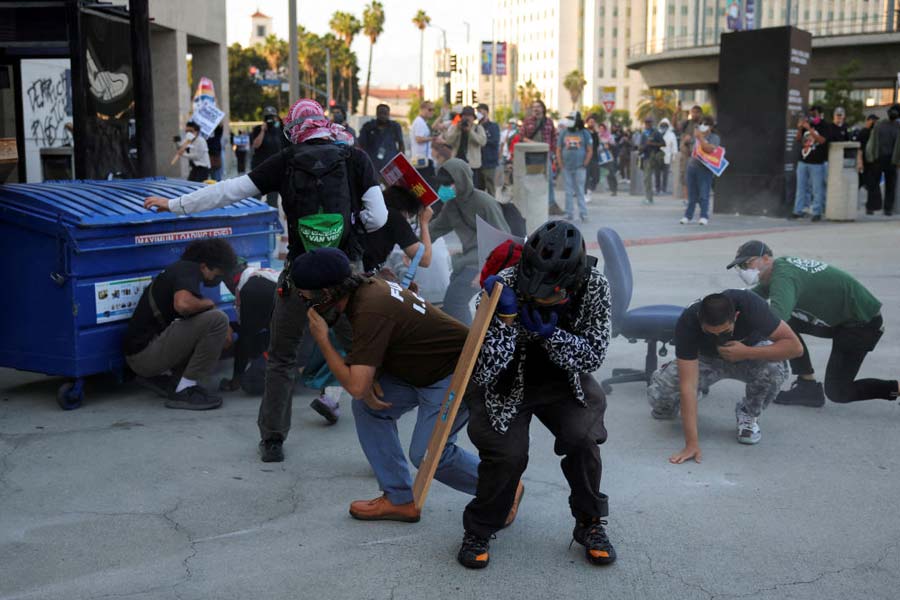 |
| An Islamic compass on the new 250 dinar banknote. (Reuters) |
Baghdad, Oct. 4 (Reuters): Iraq unveiled its new banknotes today with pictures of an ancient Babylonian ruler and a 10th century Iraqi mathematician in place of the smiling face of Saddam Hussein.
The Babylonian ruler Hammurabi, credited with creating the first written code of laws in human history, graces the new pink 25,000 dinar note, worth about $12.
The other side shows a smiling Kurdish farm worker holding a sheaf of wheat.
Astronomer and mathematician Abu Ali al-Hasan ibn al-Haytham, born in Basra in 965 and known as Alhazen to medieval scholars in the West, is on one side of the 10,000 note, the only other human figure on the new notes.
Other bills show a waterfall in northern Iraq, date palms and Islamic monuments. One has a picture of a wheat silo.
The layout of the notes is familiar to Iraqis as they are based on the so-called “Swiss dinar”, which was used in Iraq before the Saddam banknotes were introduced and still circulates in northern Iraq, governed as an autonomous region by Kurds since it was wrested from Saddam’s control in 1991.
The new notes are printed by the same firm that made the old “Swiss dinar” — Britain’s De La Rue Plc.
It has printed enough new dinars to replace the four trillion dinars now circulating across Iraq as well as an extra amount for reserves, a central bank official said.
Iraqis have three months from October 15 to exchange their old bills at 250 bank branches across the country, at a rate of one new dinar to one Saddam dinar and 150 new dinars for each Swiss dinar.
The US-led administration in Iraq has ordered all images of Saddam to be removed from monuments, murals and school textbooks.
But in the months following the war it was forced to print billions of dinars of banknotes bearing the face of Saddam, to ease a shortage of low-denomination banknotes.
Deputy Central Bank governor Ahmed Salman Mohammed also announced that the newly independent institution had sold Iraqi dinars earlier in the day at a rate of 1,900 dinars to the dollar in the first of what will become regular foreign exchange auctions.
“We hope that in a short time we will establish a stable price for the Iraqi dinar against other foreign currencies, especially the US dollar,” Mohammed said.
Along Rasheed street outside the central bank, which is protected by a massive iron fence, barbed wire and blue-shirted guards toting Kalashnikov assault rifles, foreign exchange dealers offered the dinar at around the same rate.
Most Iraqis mainly use the 250 dinar banknote at present — which means sackloads of money have to be hauled around for any large purchases.











